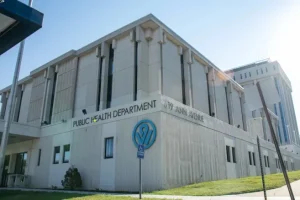United States: The United States is currently experiencing a surge in respiratory illnesses, with influenza leading the wave of infections, according to the latest data from the Centers for Disease Control and Prevention (CDC).
Emergency room visits due to influenza have reached “very high” levels nationally, with western states seeing particularly sharp increases. For example, in Oregon, 8.4% of emergency room visits at the end of December were flu-related—more than triple the highest levels reported during last year’s flu season. The Oregon Health & Science University Hospital treated 1,101 cases of influenza in November and December, a stark rise from 251 cases during the same period in 2023.
While flu cases dominate, COVID-19 infections are also on the rise, albeit at a slower pace. The CDC notes that the absence of a significant “immune-escape variant” has kept the threat of a major COVID wave at bay. Wastewater surveillance data shows that COVID-19 infections have recently reached “high” levels nationally, with the Midwest—particularly Indiana—experiencing the highest rates of emergency room visits. However, current COVID-related hospitalizations remain significantly lower than last winter’s peak levels.
📷
— SAVE AMERICA (@vietthanhsports) January 5, 2025
What virus is going around? Flu, COVID, norovirus – and don't forget RSV
The risk of respiratory syncytial virus, or RSV, is on the rise, along with that of other illnesses including the flu, stomach flu and COVID-19.https://t.co/uEaT1PzH9n
Respiratory syncytial virus (RSV) is another major concern, especially among young children and older adults. Positivity rates for RSV remain high in many regions, which has contributed to the strain on pediatric hospitals since November. Influenza cases have further intensified the pressure, with Dr. Jason Newland, an infectious disease specialist, describing the situation as hospitals being “busy” and “starting to roll” with admissions.
Additionally, norovirus is spreading rapidly in parts of the country, including the Chicago area, further compounding the burden on healthcare facilities. According to Dr. Whitney Lyn of Sengstacke Health Center at Provident Hospital, emergency rooms and urgent care centers are overwhelmed, with admission rates described as “alarming.” She noted that post-holiday surges typically increase in early January, a trend already evident in current hospital activity.
Despite the concerning levels of respiratory illnesses, vaccination rates for influenza, COVID-19, and RSV remain low nationwide. However, the CDC does not anticipate that combined hospitalizations from these illnesses will exceed last year’s levels.





